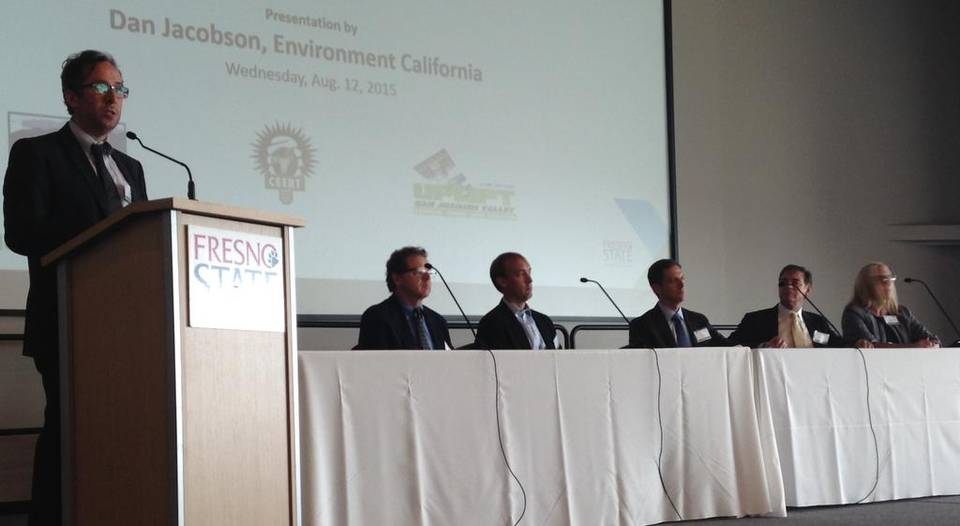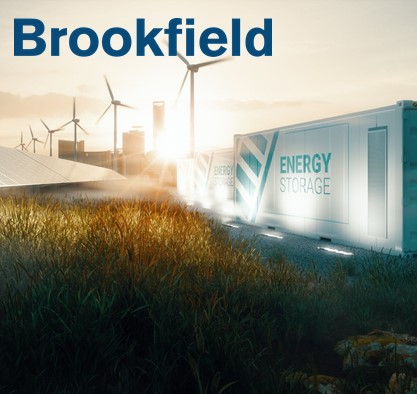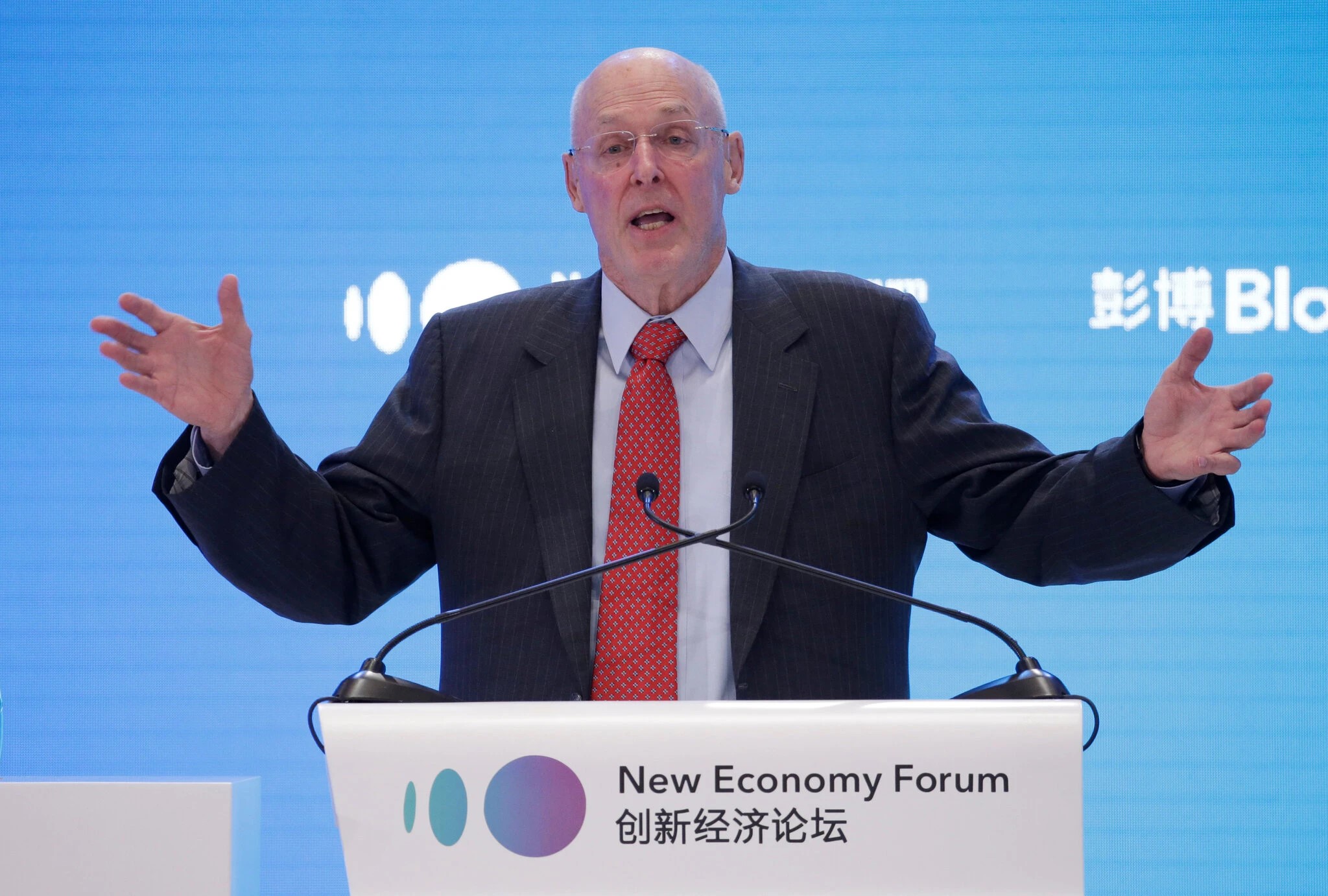About 200 energy-industry representatives, environmentalists and elected officials from throughout the Valley gathered Wednesday at Fresno State for a daylong summit on the challenges and opportunities of building the region’s capacity for solar power and other renewable energy sources.
Discussions at the summit explored how renewable energy can help the region cope with air pollution, drought, climate change and urban encroachment on farmland. Leaders discussed strategies for putting new technologies into place to deal with each of those problems while at the same time achieving ambitious state goals calling for 50 percent of California’s power to come from renewable sources by 2030. There is also a goal of a 50 percent reduction in reliance on oil for transportation.
“How do we adapt and become more resilient”? asked keynote speaker Ken Alex, a senior adviser to Gov. Jerry Brown and director of the state’s Office of Planning and Research. “That’s going to be a challenge for the entire state, but the Valley has unique challenges.”
“HOW DO WE ADAPT AND BECOME MORE RESILIENT? THAT’S GOING TO BE A CHALLENGE FOR THE ENTIRE STATE, BUT THE VALLEY HAS UNIQUE CHALLENGES.” – Ken Alex, senior advisor to Gov. Jerry Brown
Alex described a six-month experiment now taking place in the San Joaquin Valley: Representatives of a range of interests – from environmentalists to farmers to politicians – are engaged in regional planning to identify the potential development of projects to generate solar and other renewable power.
“We have to think about the Valley not just as a place for renewable power, but how do we think about how we grow the Valley in a way that’s intelligent and hits an all kinds of issues that confront the Valley,” he said.
Such efforts are going to be critical to the region’s ability to deal with the effects of climate change, said Dan Jacobson, legislative director for Environment California and author of a report shared with summit participants. Environment California was one of the organizers of Wednesday’s summit.
“The effects of climate change are no longer a science fiction story that you’re going to prepare your grandkids for, but they are here today,” Jacobson said.
He said those effects include asthma and other health concerns caused by air pollution that also contributes to climate change, drought, “and the cost of fossil fuels that are predicted to keep rising and continue to have a negative effect on our economy.”
“These problems are not confined to the Valley, but they are often exacerbated here in the Valley,” he said. But as the U.S. and the rest of the world come to terms with the need to address climate change, the move toward solar, wind, conversion of dairy waste and other agricultural wastes to biomethane could put the Valley on the edge of world leadership.
“The Central Valley has some of the best sun, some fantastic winds, we have opportunities to work with the agriculture community to adopt practices that can both reduce the amount of energy used and turn farms into carbon sinks,” Jacobson said. “Then we can take those technologies and export them all over the world. There’s an opportunity to solve a problem and an opportunity to grow our economy … and level out the economic injustice that we’ve seen.”
Jacobson said that solar power capacity has doubled in California each year for the past eight years as the prices of panels continues to fall, making it more affordable to install for individuals and businesses.
“I ALMOST HOPE THERE IS NOT JUST ONE MAGIC BULLET; BY HAVING SO MANY WAYS IN WHICH TO SOLVE THE PROBLEM, WE’RE IN BETTER SHAPE.” – Dan Jacobson, legislative director for Environment California
While solar power is by far the most visible and prevalent renewable energy source in the region, with new solar panels popping up on rooftops, over parking lots and in fallow fields across the Valley, Jacobson said multiple sources will be important, both practically and economically. “I almost hope there is not just one magic bullet,” he said. “By having so many ways in which to solve the problem, we’re in better shape.”
Representatives from several solar companies were joined by people from a hydrogen fuel cell manufacturer, a company that produces and sells lithium-ion batteries to store solar power, and a company that is a distributor for low-emission turbines that burn natural gas to produce electricity and heat energy for industries.
The dynamics of renewable power mean that whatever the sources, politicians and major utility companies will need to change the way they think about energy production and distribution. The growth of of small-scale power production, such as rooftop solar, wind or biomethane built for individual homes, businesses or farms and selling extra energy back to utility companies – a structure known as “distributed generation” – makes good policy and economic sense for consumers, Jacobson said. “The old utility model, where companies say, ‘We’re going to generate all the electricity and then sell it to you,’ is changing, and the utility companies are in the midst of figuring out what their companies are going to look like in 20 to 30 years.”
At the same time, “legislators will have to struggle with how to continue to incentivize distributed generation like rooftop solar. … It does exactly what we want our energy systems to do, which is at the most important time of the day is work at its best,” Jacobson said.
Tim Sheehan: 559-441-6319, @TimSheehanNews




